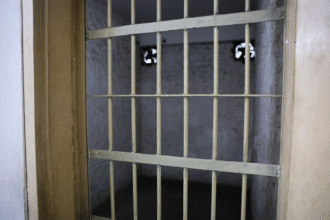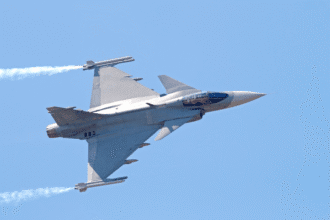A Historic Engineering Feat
Designed to link the valley area of Indian-administered Kashmir with the rest of the nation for the first time, India just finished building the tallest single-arch rail bridge in the world. Rising 35 meters above the Eiffel Tower, the bridge crosses the River Chenab in the Reasi area of Jammu. Over 20 years of work have gone into this massive infrastructure project; the first train is expected to pass the bridge shortly, connecting the Bakkal and Kauri communities.
Strategic and Economic Significance
A 272-kilometer (169-mile all-weather railway line linking Jammu with the Kashmir valley would eventually depend on the bridge as an essential component. Due to significant snowfall covering the route from Jammu, the road access to the Kashmir valley is sometimes blocked in winter. India will gain strategically from this new railway line along the disputed boundary.
“The rail bridge will allow the transport of military personnel and equipment around the year to the border areas,” said Giridhar Rajagopalan, deputy managing director of Afcons Infrastructure, the contractor in charge of building the bridge. The project will also enable India to fulfill its “strategic goal of managing any adventurism by Pakistan and China [with whom it shares tense relations] on the western and northern borders.”
Local Reactions and Government Policies
Under Prime Minister Narendra Modi’s government, the railway line is part of a more considerable infrastructural development effort comprising over 50 other roadway, railway, and electricity projects. In 2019, the Modi government split Jammu and Kashmir into two federally controlled areas and removed its special status. This divisive action and a months-long security lockdown infuriated many residents. Since then, the government has carried out various administrative tweaks to bring Kashmir closer to the rest of India.
Shruti Pandalai, who is strategically minded, said, “While India’s plans for the region would naturally be guided by its strategic aims, it also needs to take local needs and context into account.”
Engineering Challenges and Solutions
Legal problems, safety challenges, and the area’s complex geography caused several delays for the Chenab Bridge project. Early on, engineers had to negotiate rugged terrain and frequently reached the isolated site by mule or foot. The youthful mountain range with intricate geotechnical characteristics, the Himalayas, provided more challenges. Located in a strongly seismic zone, the bridge needed careful investigation and changes to resist predicted wind gusts of up to 266 km per hour.
Given the location’s inaccessibility and the limited highways, logistics presented another significant obstacle. Mr. Rajagopalan stated that many of the bridge’s parts were constructed and manufactured on-site. Moreover, the bridge was built to be blast-proof; Afcons claims it can withstand an explosion of up to forty kilos of TNT. Trains will keep running even if damage results or a pillar collapses, although at slowed-down speeds.
Economic and Social Impacts
Allowing all-weather connections to the Kashmir valley is hoped to significantly strengthen the area’s economy. Poor connectivity during winter has been a recurring problem for the valley’s mainly agricultural companies. According to the Observer Research Foundation, seven in ten Kashmiris depend on perishable fruit farming.
Running one of the most significant cold storage facilities in the Pulwama area, Ubair Shah said, “The impact of the rail link could be huge.” Most plums and apples he currently stores are sold in northern states like Delhi, Punjab, and Haryana. The new railway line will provide farmers access to southern India, raising their revenue. Shah observed that a quick shift to railway cargo might only be possible with improved last-mile connections. “There is a 50-kilometer closest station here. First, we must send the product to the station, unload it, and load it onto the train. Too much handling here is involved. He said that you have to attempt to limit perishable goods.
Tourism Prospects and Security Concerns
Furthermore, the project is expected to boost the area’s tourism income. Though distant, Kashmir’s well-known tourist sites have experienced a recent rise in attendance. Not only would a direct rail service between Jammu and Srinagar drastically save travel time, but it would also cut expenses, thereby helping the travel industry.
Still, problems exist. Kashmir still suffers periodic violence. Recent increases in extremist activity, notably a fatal attack on Hindu pilgrims in Reasi in June, underline continuous security issues. “Such events serve as a reminder of the fragility of peace here; without stability, connectivity initiatives will only go so far in revitalizing the region’s economy,” analysts say.
In essence, the region’s continuous security concerns and logistical difficulties must be resolved if the new rail bridge is to fully fulfill its potential, even if it marks a tremendous technical achievement and promises economic and geopolitical advantages.








